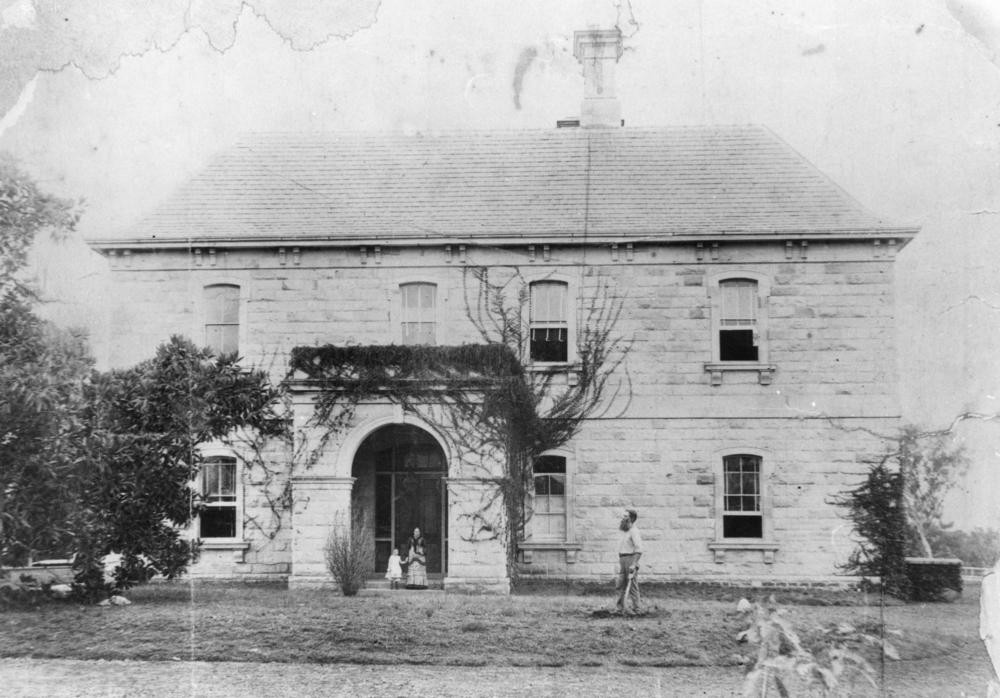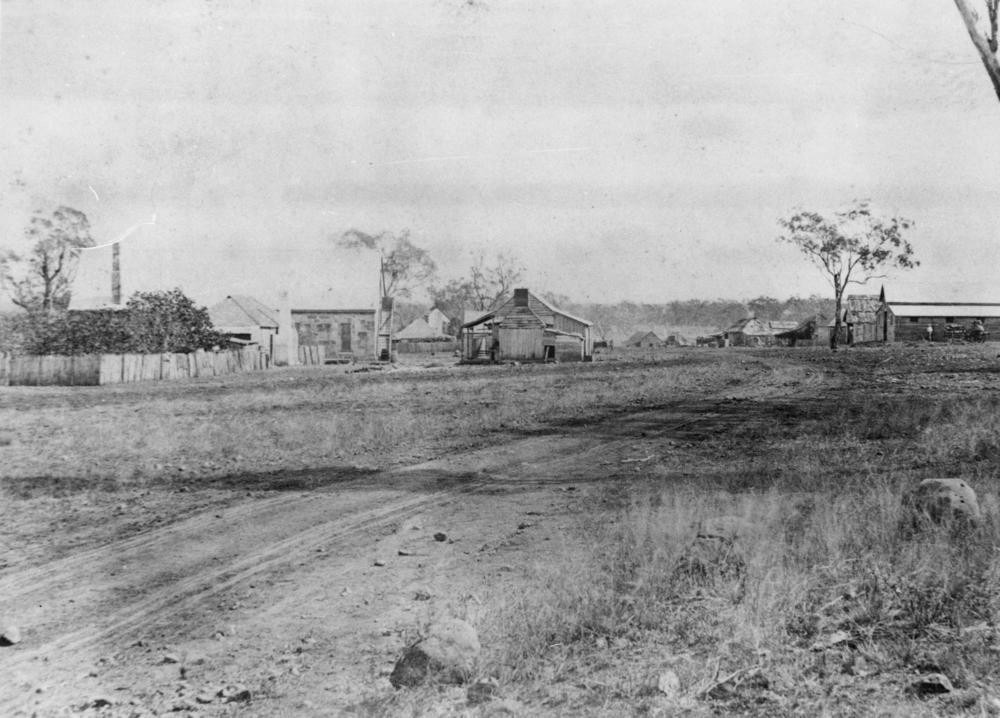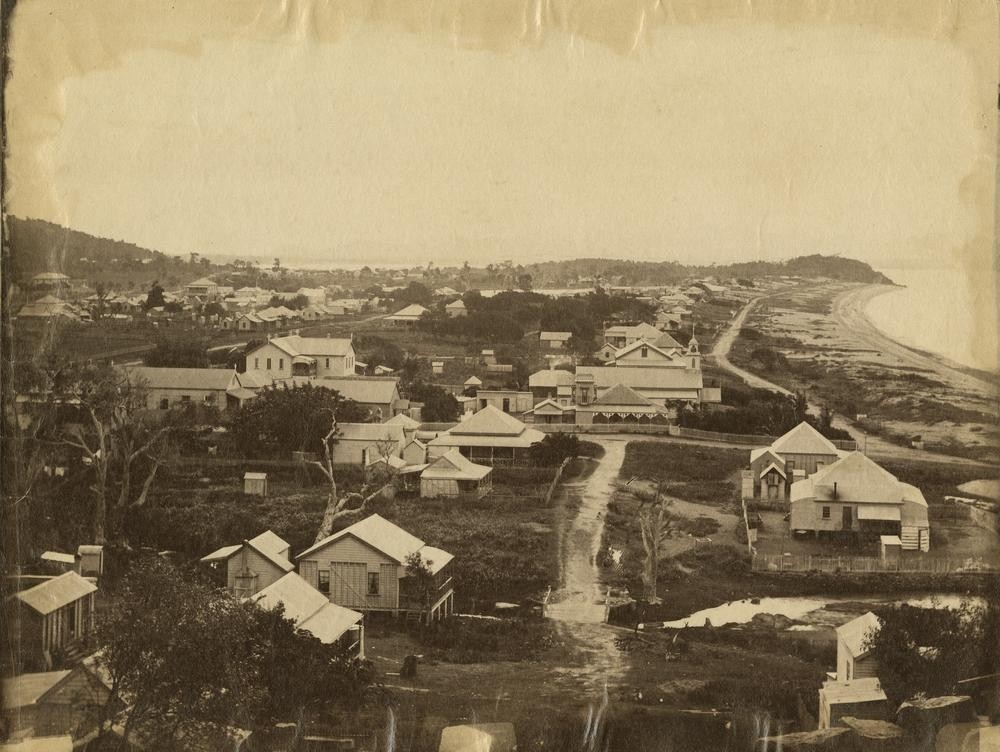Transit of Venus 1882 and 2012
By Simon Miller, Library Technician, State Library of Queensland | 4 June 2012
2012 will be a big year for astronomical phenomena in Queensland, as was the year 1882. In November there will be a total eclipse of the sun visible across North Queensland, the first total eclipse visible in Queensland since 1922. I will have more about the 1922 eclipse and the important role Goondiwindi played at that time in a blog closer to the big event. The other significant astronomical event this year will be the Transit of Venus which will be visible on Wednesday 6th of June between 8:16 am and 2:44 pm. You can view this transit event easily on several webcasts such as the one at http://www.transitofvenus.com.au but it was a different story in 1882. The transit of Venus is a rare event that occurs in pairs eight years apart but each pair of events is separated from previous and subsequent pairs by intervals of over 100 years. Thus there was a transit in 2004 but the previous event was in 1882, and the next transit will not be seen until 2117!
Of course the 1769 transit has a vital historical connection to Australia. Lieutenant James Cook was dispatched to Tahiti on HMS Endeavour to observe the transit. After a successful observation he was directed to search for the “great south land” thought to exist in the South Pacific Ocean and following that search he discovered and charted the east coast of Australia. There was still considerable interest in the transits that occured in 1874 and 1882.
In 1882 a British team from the Royal Geographical Society was sent to observe the transit of Venus at a suitable site near Toowoomba. One of the leaders of the expedition was Lieutenant Leonard Darwin, who was the son of Charles Darwin (who had himself visited Australia in 1836 on board the Beagle). There is a detailed report on the expedition and the scientific significance of the transit in the Morning Bulletin, a Rockhampton newspaper, of Tuesday 5th of December 1882 which can be read on Trove Digitised Newspapers here:
http://nla.gov.au/nla.news-article52060640
The year that is now drawing to a close has been one of great interest from an astronomical point of view. In our southern sky, two comets have made their appearance, and remained visible for a considerable time ; one of them, still visible, though with greatly diminished lustre, a comet of rare magnitude and of great splendour. Only the other day another beautiful celestial phenomena was seen, an annular eclipse of the sun. When the eclipse was at its height the dark orb of the moon was seen surrounded by a ring of bright light-the portion of the sun's face which was at that moment unhidden by the moon's disc.
Another event of a far less striking character as to appearance, but of immeasurably greater, importance, is now close at hand. We refer to the transit of Venus. This is an event of the same, character with the eclipse of which we have just spoken. In the latter we saw the moon pass between us and the face of the sun; in the transit of Venus the planet just does the same thing, but at a very much greater distance from us, the moon being only about 240,000 miles from us, while Venus is over 22,000,000 miles distant.
The article goes on to cover the history of scientific interest in the transit of Venus from when the phenomenon was first predicted by Johannes Kepler in 1631 and then details some of the technological advances which will be used to study the latest event.

These and other novel and refined methods of observation will be applied in the observation of the transit of 1882 ; and it is a matter of interest to us that Queensland has furnished one of the places where trained observers are to co-operate in this almost world-wide enterprise. Some month or two ago the arrival of these experts was duly noted in the newspapers. They have fixed their point of observation at Jimbour, on the Darling Downs. The situation is in many respects a highly favourable one. Jimbour is about 1500 feet above the level of the sea, very little short of the height of Mount Berserker, and usually enjoys a very clear atmosphere, peculiarly suitable for celestial observations. The glimpse which they will obtain of the planet against the face of the sun will be a very short one ; for it will leave the Sun's disc at six o'clock in the morning, of Thursday next the 7th instant. But every precaution has been taken to secure the utmost possible accuracy should the weather be favourable, the exact moment at which the planet seems to enter upon or to leave the sun as seen from any given point, being one of the most important elements in the calculations that are to follow. Queensland therefore, may contribute largely, if indirectly, towards the more accurate solution of what Sir John Herschel calls "the noblest of all the problems which present themselves to the astronomer."

The scientific problem to which the article refers is the attempt to determine the exact distance from the Earth to the Sun. This knowledge could then be used to determine the dimensions of the entire solar system and its planets. Unfortunately the observers at Jimbour were not able to contribute to the scientific effort as cloud cover prevented any useful observations although other expeditions around the world were more successful. Today modern techniques, such as the use of radio telemetry from space probes, and of radar measurements of the distances to planets and asteroids in the Solar System, have allowed far more accurate distances to be calculated, however the transit is still of great scientific interest, particularly for developing techniques that can be used to detect planets in distant star systems.
The Jimbour expedition had an unintended consequence when the telescope brought out for the observations was apparently left behind as revealed in an article in The Brisbane Courier of 16th of October 1884, originally credited to the Townsville Bulletin. You can read the full article here: http://nla.gov.au/nla.news-article3435158
When Captain Morris, Lieutenant Darwin, and staff came out here in 1882 in charge of the English Transit of Venus Expedition, to take observations in Queensland, they brought out for that purpose a powerful telescope, manufactured by the celebrated opticians, Messrs Cooke and Sons, of York, England, probably the best makers in the world, to the order of the English Government, for the occasion. The telescope was set up at Jimbour, on the Darling Downs, where the observations were to be made, but as will be remembered, the sun was obscured by clouds at the time of the transit, and Captain Morris and his party were unable to aid the cause of science by any observations from that part of the world. By some oversight, the then Government neglected to secure the telescope, and it was purchased by Mr E Norris, solicitor, of this town. Mr Norris has for the past twenty years taken a deep interest in the study of astronomy, and for many years was engaged as an amateur in taking astronomical observations in Brisbane, Bowen, and Townsville. Anxious to erect an observatory for the grand instrument in his possession, he, during his last visit to the Southern colonies, visited the Government observatories in Sydney, Melbourne, Adelaide and Brisbane, besides the private ones of Dr Wright, Wynyard square, Sydney, Mr J Tebbutt, of Windsor, and many others, the result of his then observations and more recent studies being the plan and model of a new observatory which is now being erected at his residence on the Strand, and which will be completed by the end of the week. The work of its erection has been placed in the hands of Mr Carruthers, a local builder, and is at once simple, easily worked, thoroughly efficient, cool, and secure against wind and rain, and not likely to got out of order.
Mr Edwin Norris was for many years Town Solicitor of Townsville and a wealthy and well respected citizen. He was an enthusiastic yachtsman as well as astronomer and a high ranking Mason. He was also noted as having played in a historic cricket match between Brisbane and Ipswich in 1859. On his death in 1892 the flags of the city were hung at half mast.

Comments
Your email address will not be published.
We welcome relevant, respectful comments.